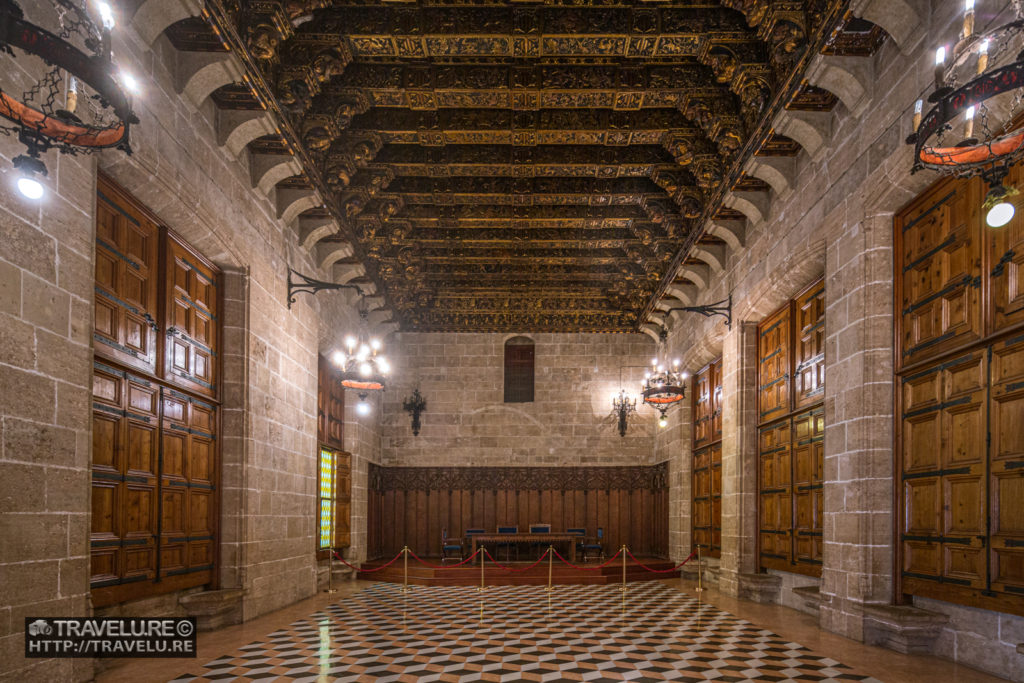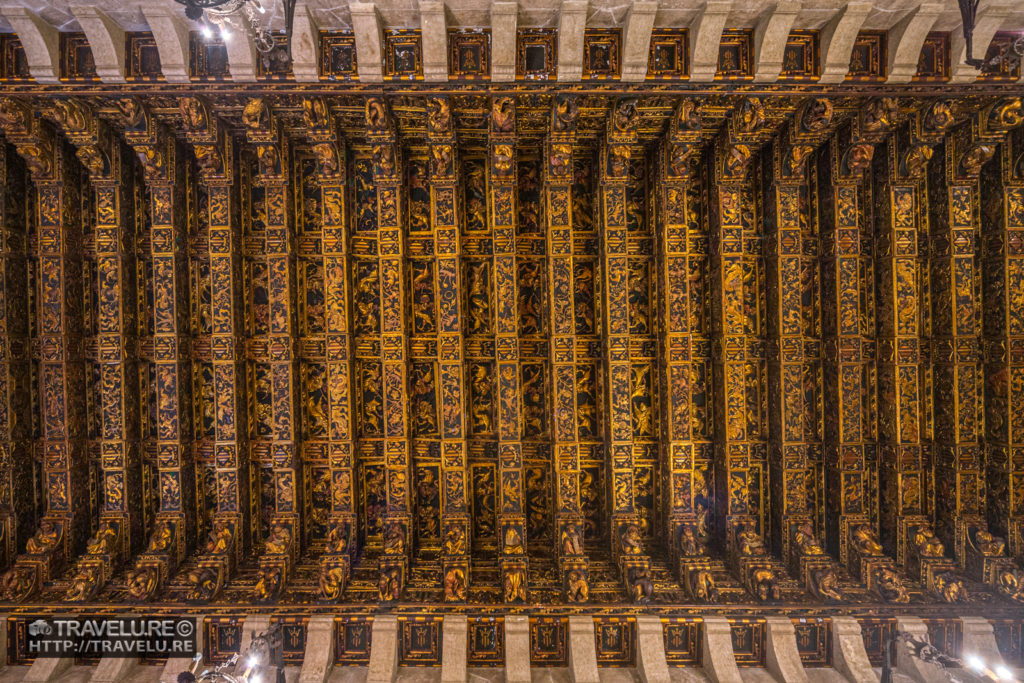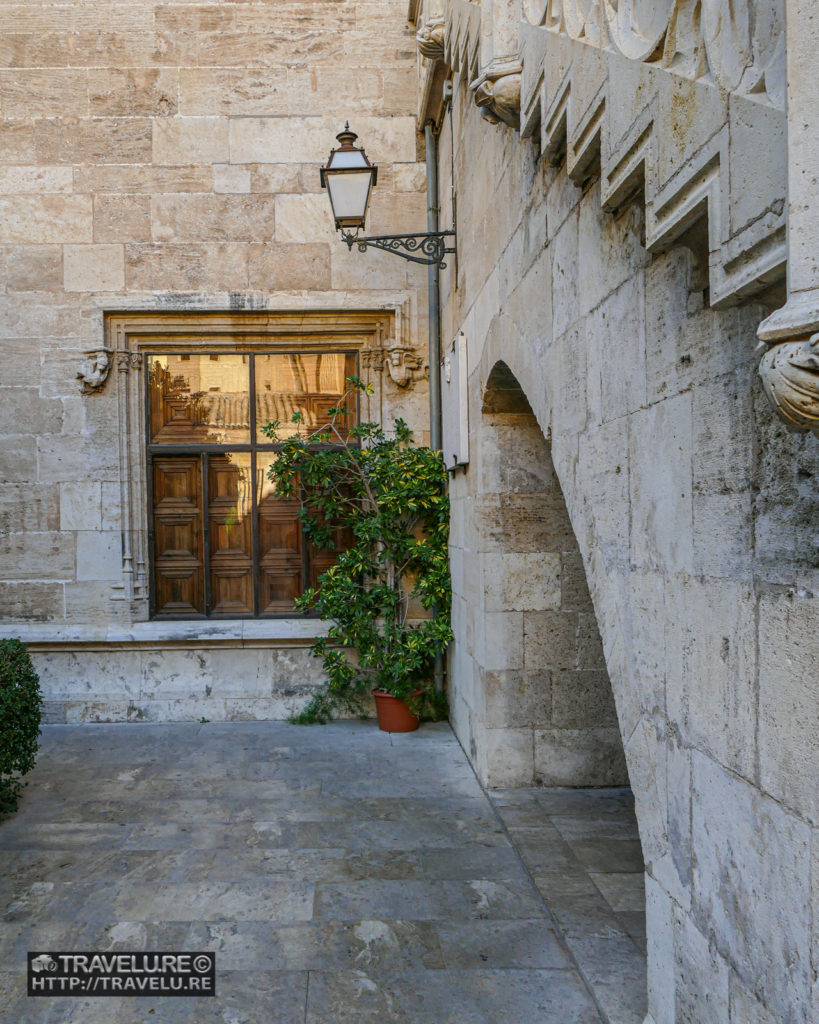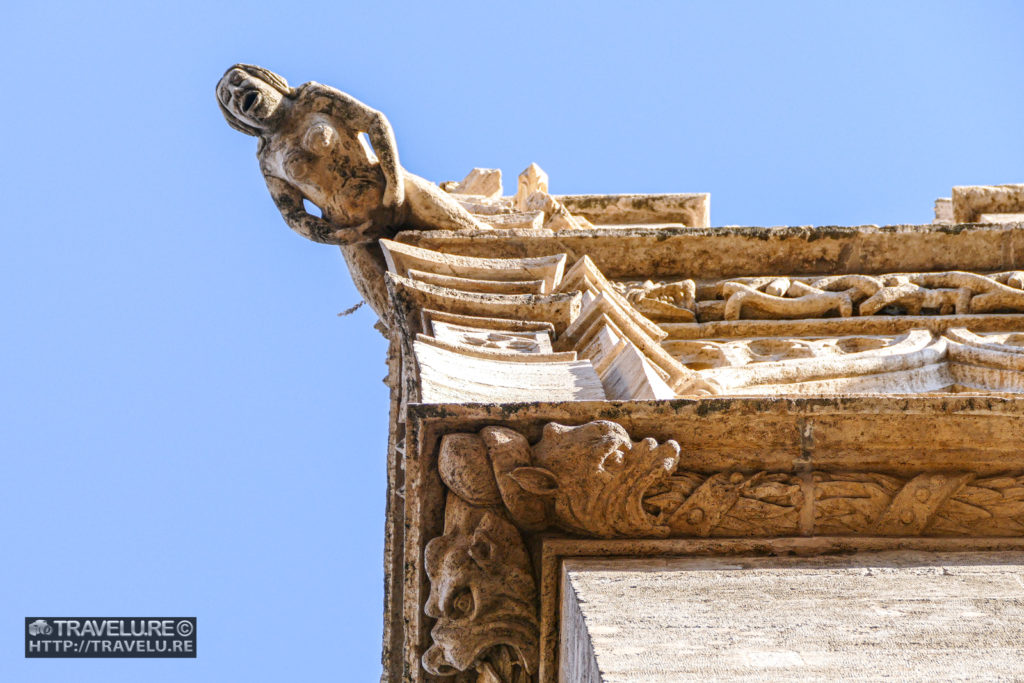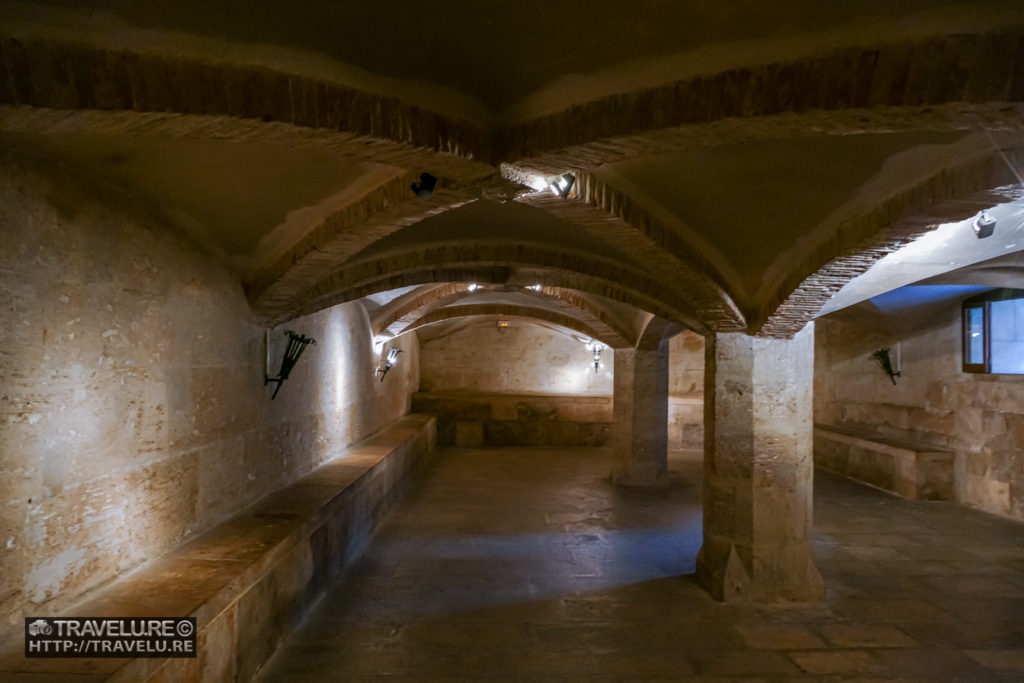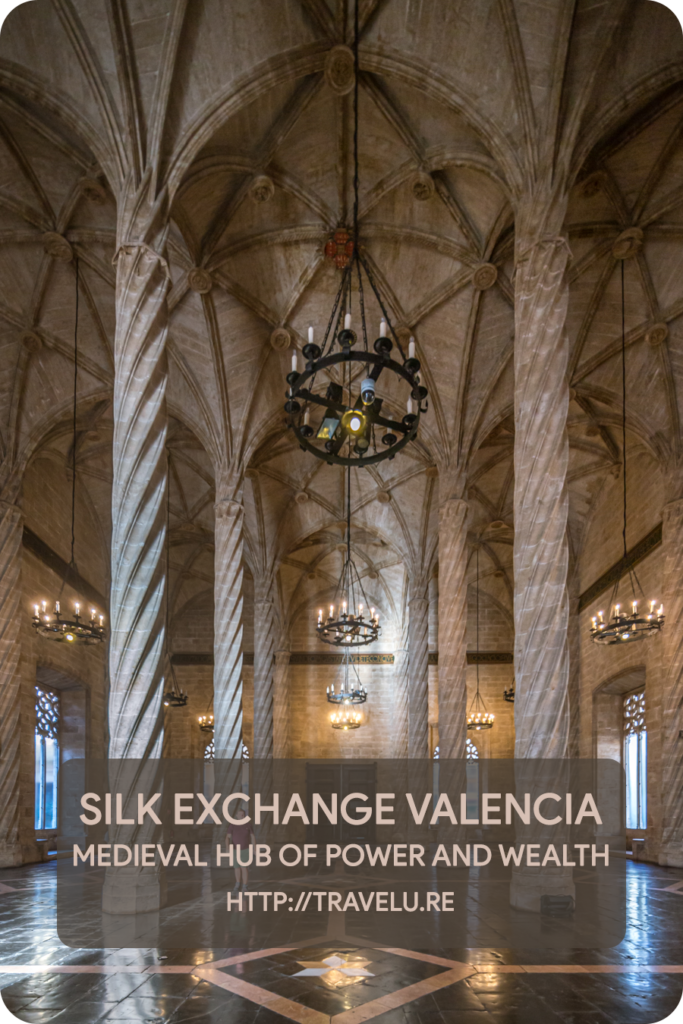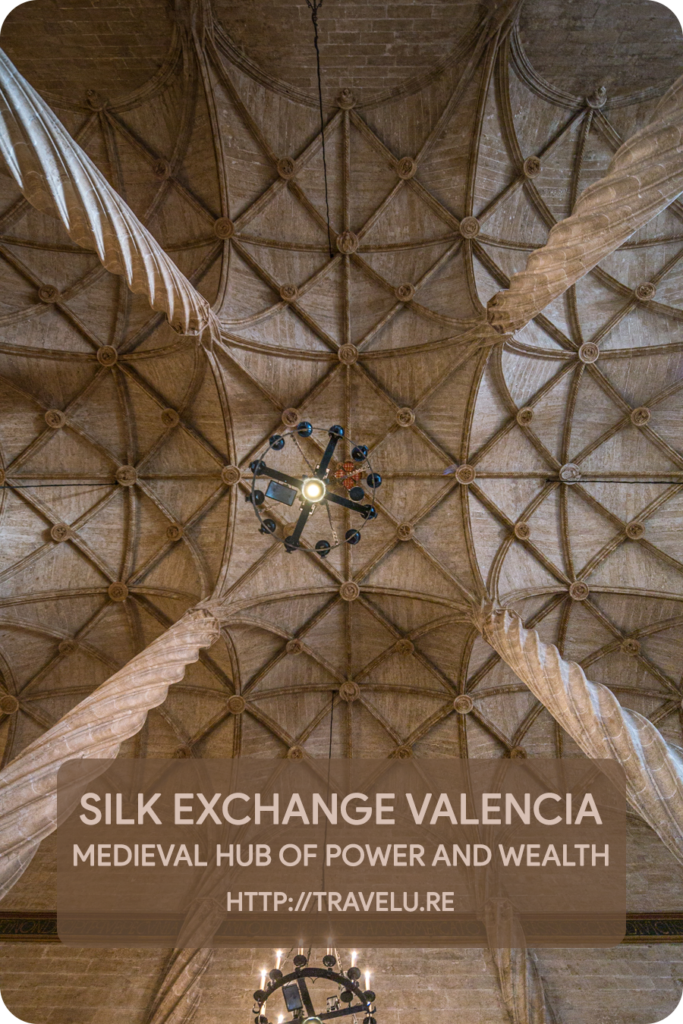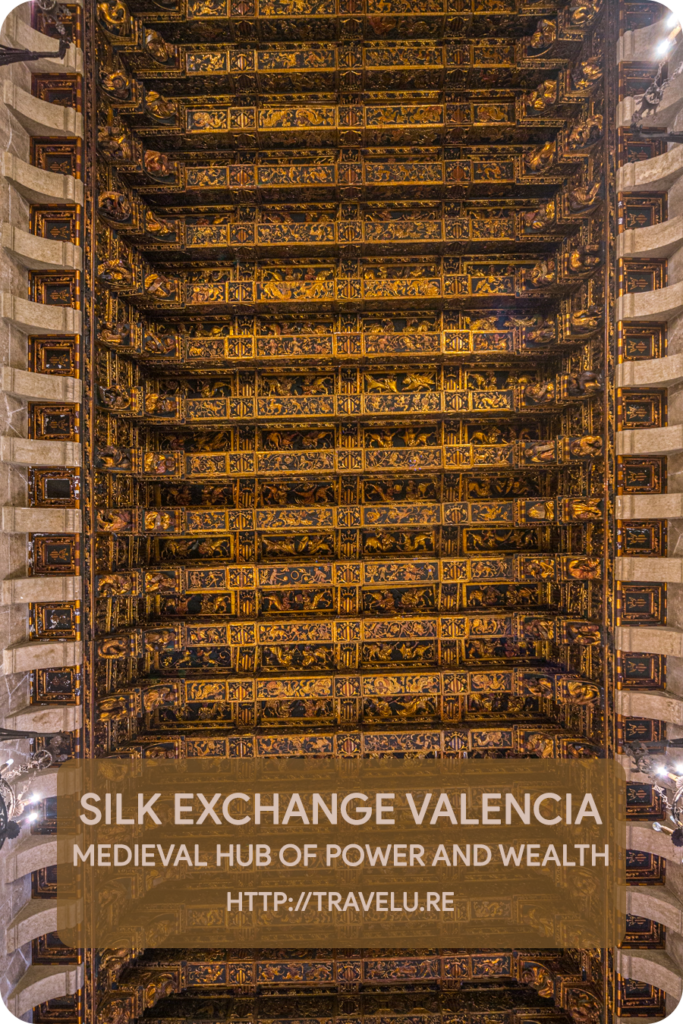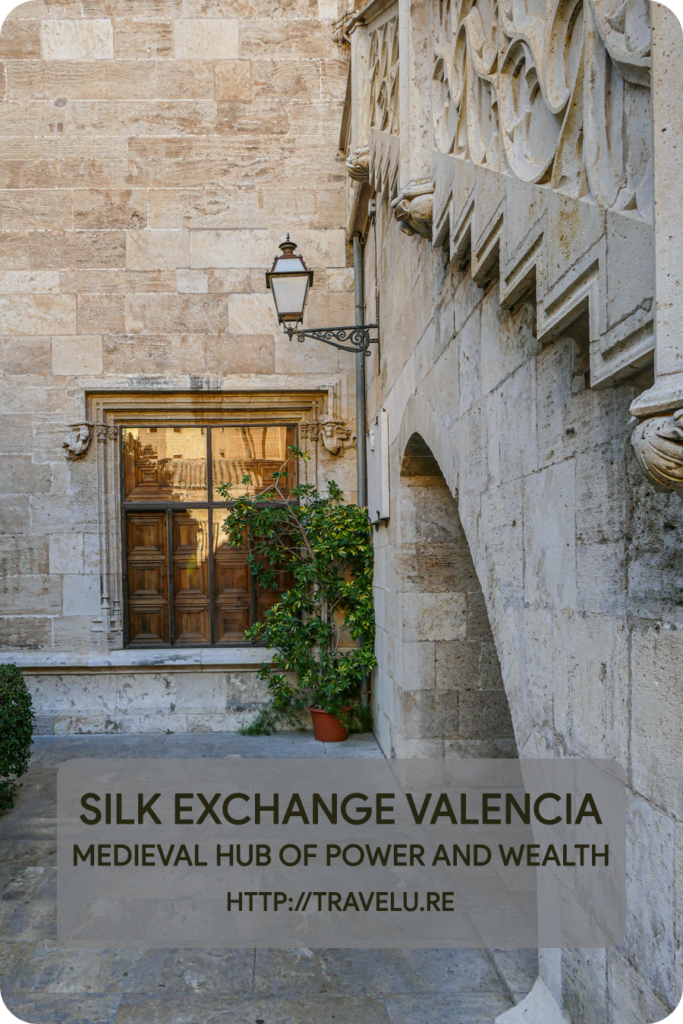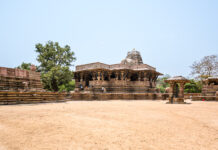Silk Exchange, Valencia – Medieval Hub of Power and Wealth
UNESCO has acknowledged and inscribed 1100+ sites, man-made, cultural, and natural, on its world heritage list. The man-made sites straddle city centres to places of worship, museums to palaces and gardens, ancient excavated townships to modern-day architectural marvels. But seldom has UNESCO listed a trading hub on this prestigious listing. Silk Exchange Building in Valencia, Spain, known as La Lonja de la Seda de Valencia in Spanish, is one such exception. Let’s see why!
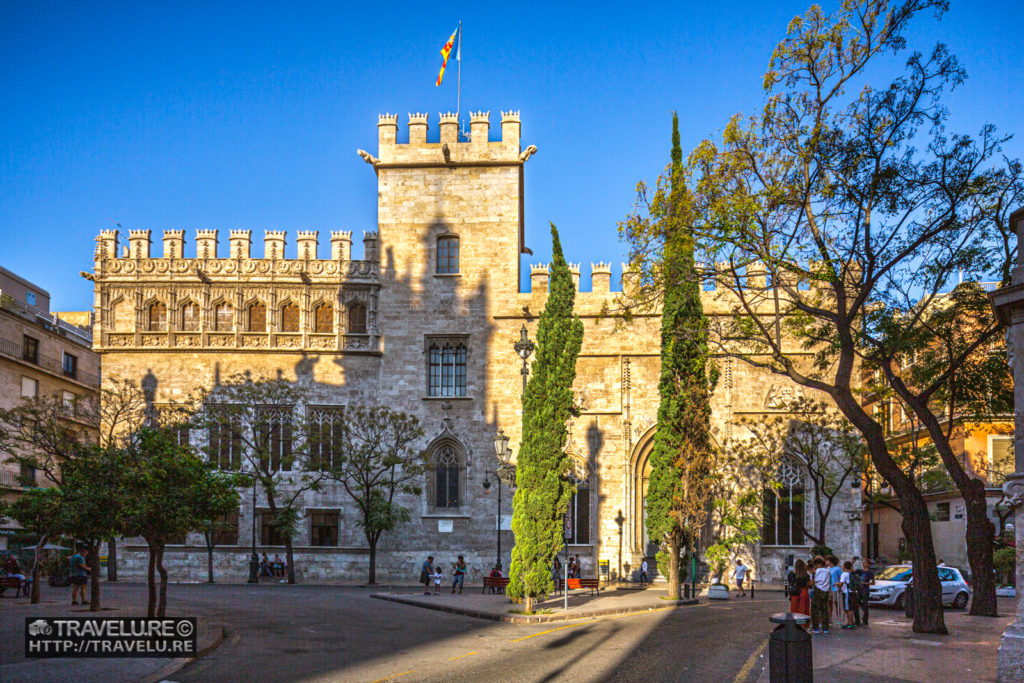
In a city dominated by medieval architecture, it took me a while to locate this landmark. Reason? My zero understanding of the Spanish language. I did not know that locals don’t call it Silk Exchange. For them, it was La Lonja, for short. Even when I found it, locating its entrance was a task. The main entrance has been closed, and you have to find the back entrance to get in!
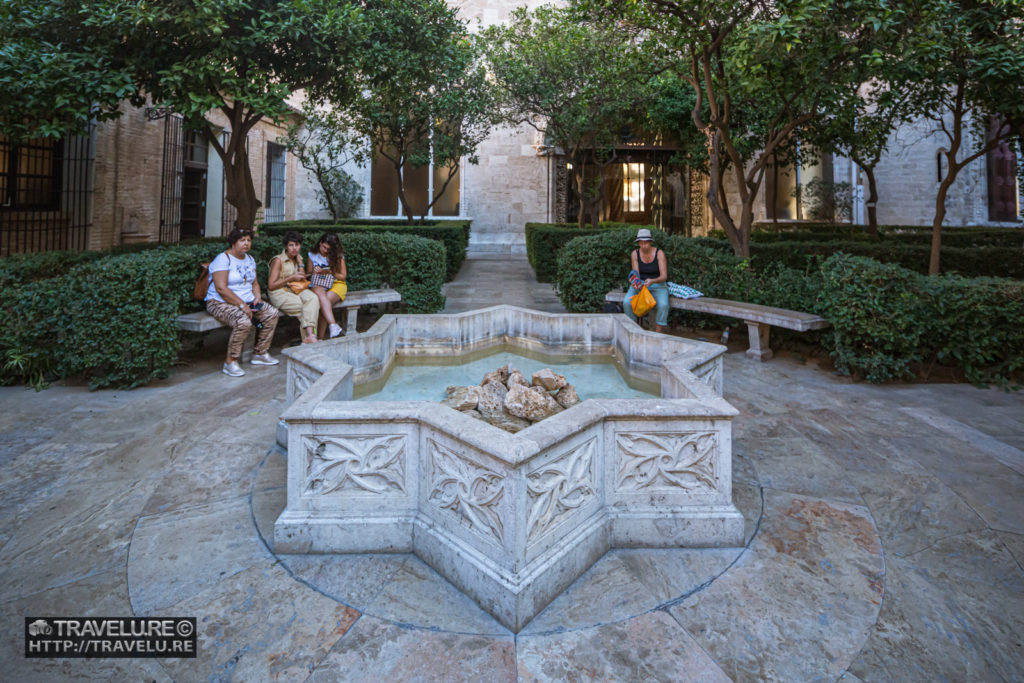
Inside La Lonja
The rear entrance led me to a small courtyard garden. To the right of this Orange Tree Patio, I spotted an outdoor staircase. It leads to a large hall called Consulate of the Sea (Consulado del Mar). This was the meeting place of the merchants – the key reason for the City Council to build Silk Exchange. Beams covered in gilded bas reliefs pack its ornate ceiling.
Next to it is a three-storeyed tower called Torreon (Great Tower). Its ground floor was a chapel, while they used the other two floors as a prison for defaulting traders and merchants. Along the walls of the complex, tasteful statues (a la gargoyles of the Cathedral of Notre Dame in Paris) cover the water drains. Except, one statue is of a woman in the nude hiding her crotch with both her hands.
The Room of Columns
To the left of the courtyard garden is the Contract Hall (Sala de Contratación), also called Room of Columns (Salon Columnario). The ceiling height of this cavernous 781 sq mt room is 17.4 metres. Given its massive area, 24 twisted pillars support its ceiling vault. Since these pillars support the vault’s ribs, the impression you get is of giant palm trees. These pillars provide a 3-nave look to this hall. And it operated as the wealthy merchants’ trading playground.
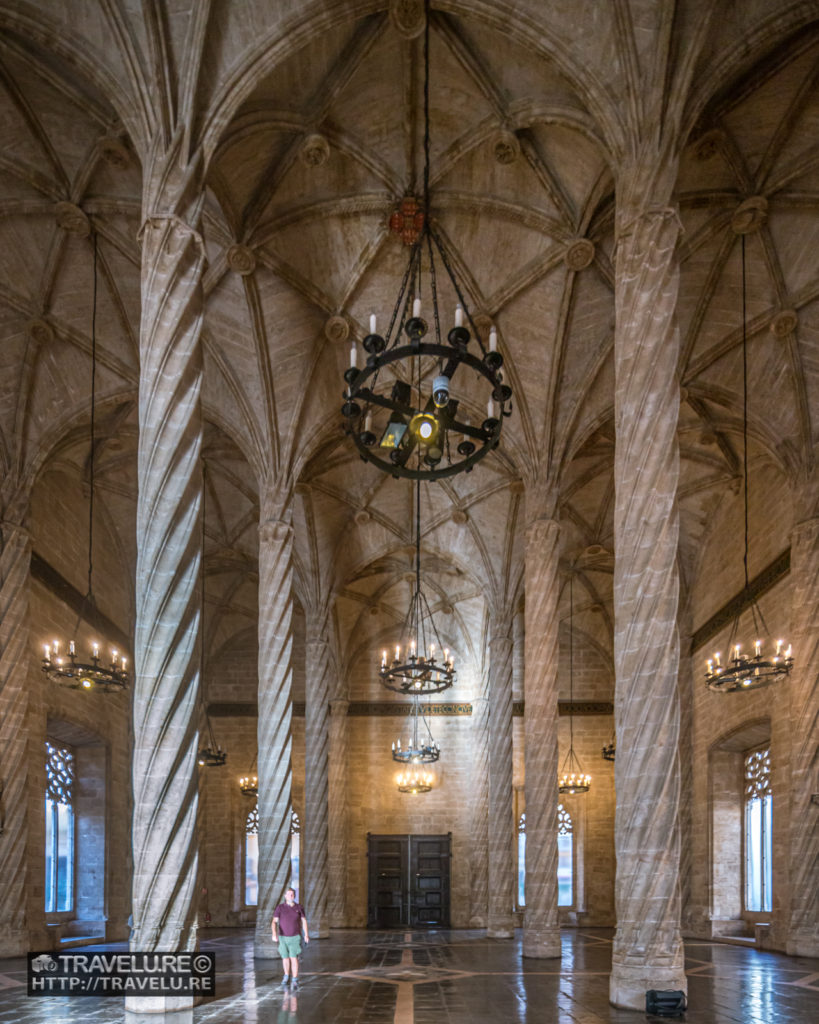
Just beneath where these pillars meet the ribs of the vault, a green and gold inscription in Latin runs along the four walls of the hall. It was a simple reminder for the traders to be good christian and trade with honesty, so they remain prosperous. Black, white and ochre tiles adorn the floor.
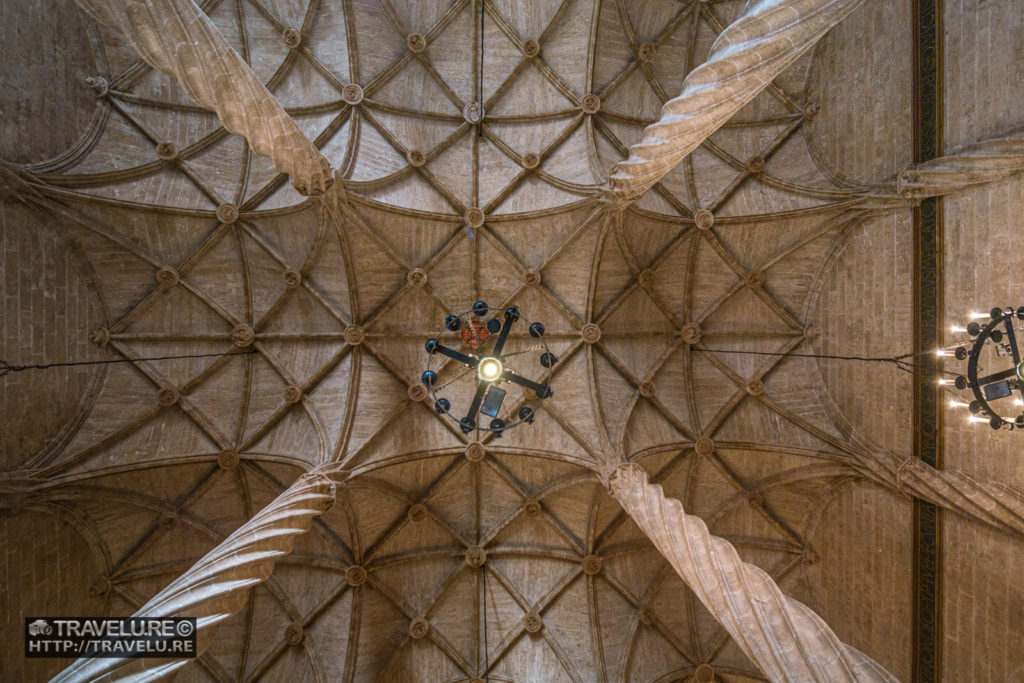
This room was the trading hub of Europe during the middle ages. With its trading tables now removed, the hall reminds you of a gigantic cathedral. Nothing wrong with it, as it was the de facto cathedral of Mediterranean wealth during the 15th and the 16th centuries!

